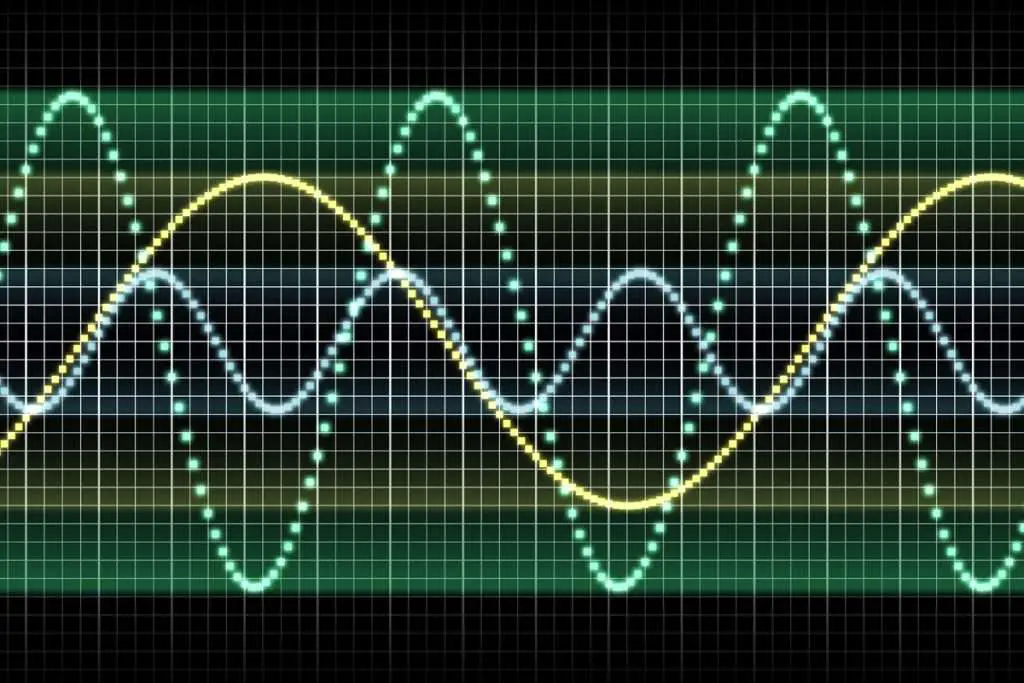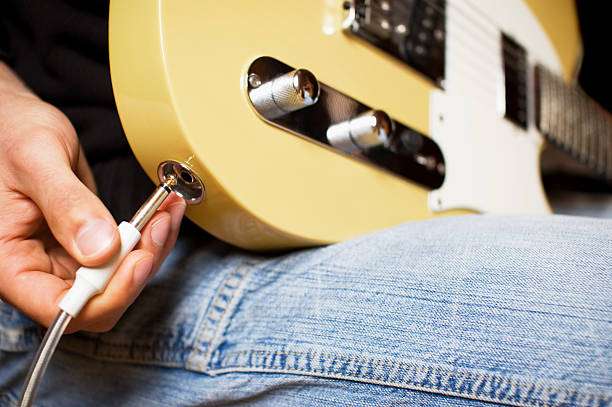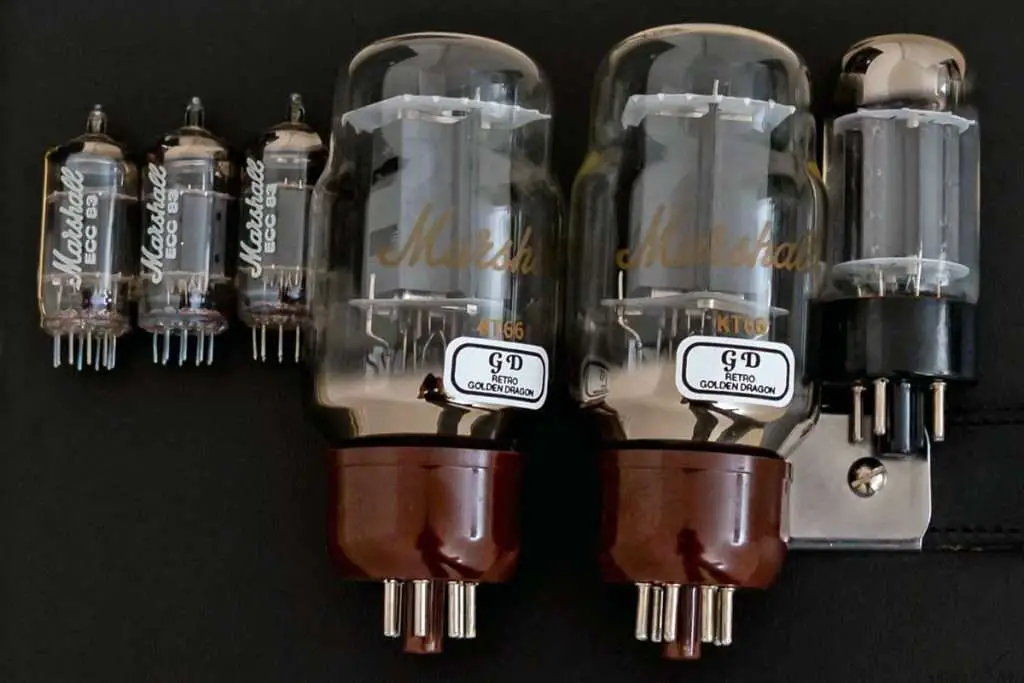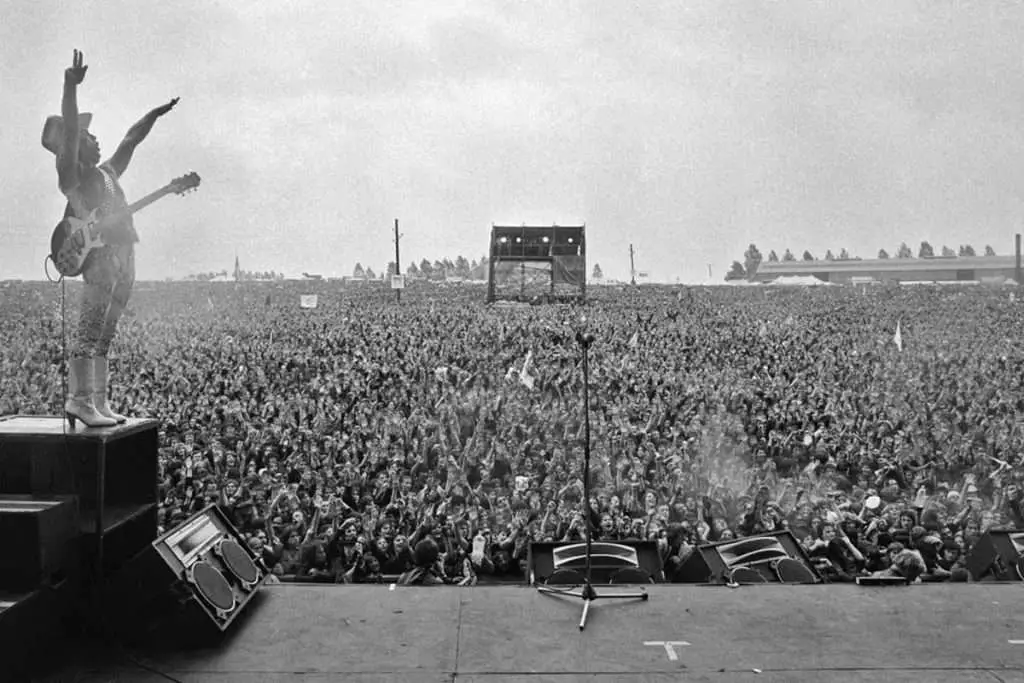Guitar amps & bass amps are two distinct but also very similar entities in the world of amplification, each designed to cater to the unique characteristics of their respective instruments. Bass amplifiers are engineered to provide the low-end foundation, whereas guitar amplifiers are meticulously crafted to enhance the melodic nuances and tonal complexities of guitars. An intriguing question arises, however: Can guitar amps be used for bass?
Afterall, both instruments use amps, both have frets, both use strings. This article delves into the intricacies of guitar and bass amplification, exploring their differences and addressing whether it is advisable or feasible to use a guitar amp for a bass guitar.
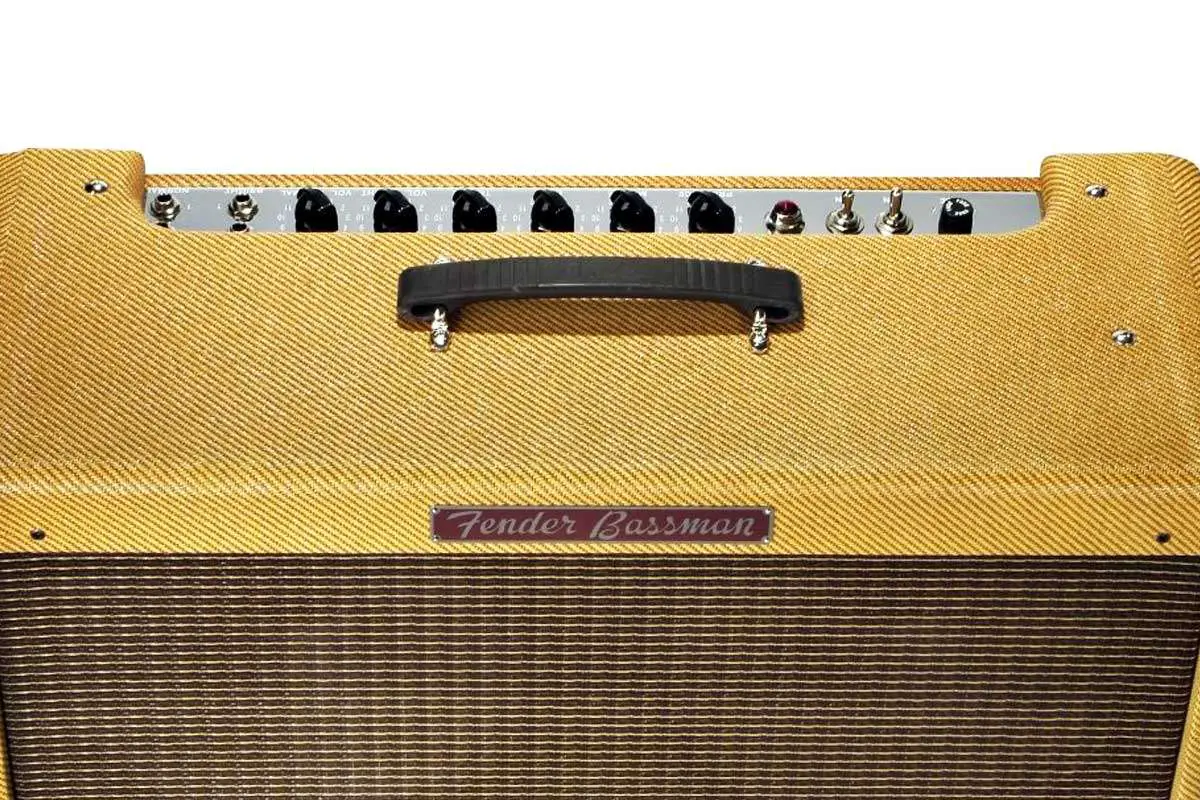
Brief Explanation of Guitar & Bass Amps
Guitar amplifiers, often called “guitar amps,” are electronic devices that amplify the signal produced by an electric guitar. They consist of multiple components such as preamps, power amps, tone controls, and speakers. These amps are carefully designed to accentuate specific frequencies within the range of a guitar’s sound spectrum.
This tailored approach enhances the instrument’s unique timbre, harmonics, sustain, and overtones. Bass amplifiers or “bass amps,” on the other hand, serve as dedicated systems for enhancing the low-frequency range produced by bass guitars.
These specialized amplifiers often feature larger speakers with greater cone excursion capabilities required for reproducing deep bass tones accurately. They provide ample headroom and robust power handling capacities to ensure clarity in reproducing thumping low notes without distortion or loss in fidelity.
The Question: Can Guitar Amps Be Used for Bass?
Yes, guitar amps can be used for bass, but it’s not the best option for a variety of reasons. Guitar amplifiers are specifically designed to emphasize the midrange frequencies produced by electric guitars. When you plug a bass guitar into a guitar amp, the sound may lack the deep, low-end punch that bass guitars are known for. Furthermore, the speakers in guitar amplifiers are frequently smaller, and they may not effectively reproduce the full range of bass frequencies, potentially leading to distortion and damage when played at high volumes.
Furthermore, bass guitars frequently require more power to produce the required volume, particularly in a band setting. Guitar amplifiers may lack the wattage required to keep up with the other instruments. While a guitar amp can be used for bass in a pinch or for specific creative purposes, if you’re serious about playing bass, investing in a dedicated bass amp is strongly advised. Bass amplifiers are designed to handle the lower frequencies and power requirements of bass guitars, providing bassists with a better overall tone and performance.
The Differences Between Guitar & Bass Amps
Power Handling
When comparing guitar amps to bass amps, one crucial distinction lies in their power handling capabilities. Guitar amps are typically designed to handle lower wattage outputs, ranging from 5 to 100 watts, as they primarily focus on generating clean or distorted tones suitable for guitars. On the other hand, bass amps require significantly more power due to the lower frequencies produced by bass guitars.
Bass amplifiers often start at around 100 watts and can extend well into the thousands, enabling them to reproduce deep bass notes with clarity and authority. The higher power output of bass amps ensures that the low-end frequencies are adequately amplified without distorting or losing definition.
Frequency Response
Another critical factor distinguishing guitar and bass amplifiers lies in their frequency response characteristics. Guitar amps are specifically engineered to emphasize midrange frequencies that contribute to a guitar’s signature sound. They boost certain midrange frequencies associated with guitar solos or chords, providing a cutting tone that enables the instrument’s intricate nuances to be heard distinctly within a mix.
Conversely, bass amplifiers prioritize low-end frequencies since they need ample power and speaker capacity to reproduce deep notes accurately. By focusing on enhancing low-frequency response, these specialized rigs ensure that each note played on a bass guitar has sufficient depth and impact.
Speaker Size & Cabinet Design
The size of speakers used in guitar and bass amplifiers significantly differs due to the varying tonal requirements of both instruments. Guitar cabinets often employ smaller speakers measuring around 10 inches or less in diameter.
This design choice allows for focused projection and accentuation of midrange frequencies, contributing to the characteristic punch and bite associated with electric guitars. In contrast, bass cabinets typically feature larger speakers, commonly 12 or 15 inches in diameter.
The larger surface area provided by these speakers enables them to move more air and reproduce the lower frequencies accurately, resulting in a robust and full-bodied bass sound. Additionally, bass cabinets are often constructed with a more substantial build to handle the increased pressure caused by low-frequency reproduction without distortion or damage.
By understanding the distinctions in power handling, frequency response, and speaker size between guitar amps and bass amps, we gain valuable insights into why each amplifier is specifically suited for its respective instrument. This knowledge will help us further explore the compatibility issues that arise when attempting to use guitar amps for bass and explore potential solutions to achieve satisfactory results.
Compatibility Issues When Using Guitar Amps for Bass
Low-End Response
When it comes to reproducing the rich and resonant low-end frequencies produced by a bass guitar, guitar amps often fall short due to their limited frequency response. Typically, guitar amps are designed to emphasize midrange frequencies, which are crucial for delivering the characteristic crunch and articulation of electric guitars.
However, this emphasis on mids results in a compromised ability to accurately reproduce the deep rumbling tones that define bass playing. As a result, when a bass guitar is plugged into a guitar amp, the lower frequencies may sound muddy or lack definition.
Speaker Damage Risk
One significant risk associated with using a guitar amp for bass is the potential damage it can impose on its speakers. The low-frequency signals generated by a bass have more energy and require more power to reproduce accurately compared to an electric guitar’s signal.
Guitar amp speakers are typically engineered to handle the specific sonic characteristics and power requirements of guitars. When pushed with low-frequency signals beyond their intended capabilities, these speakers can experience strain or even physical damage.
Lack of Tone Control
Another drawback of using guitar amps for bass stems from their limited tone control options specifically tailored for shaping bass frequencies effectively. While many modern guitar amplifiers feature onboard equalization controls (treble, middle, and bass), these controls are optimized primarily for the tonal needs of guitars—emphasizing midrange punch or sweetening high-end harmonics.
This lack of dedicated EQ controls tailored specifically for shaping low-end frequencies leaves bass players without the necessary tools to sculpt their tone adequately. Consequently, achieving an ideal balance between lows and highs becomes increasingly challenging when relying solely on a guitar amp’s built-in tone controls.
Solutions for Using Guitar Amps with Bass Guitars
Pedals and Effects Processors
When using a guitar amp for bass, one effective solution is to incorporate dedicated pedals or effects processors into your setup. These devices allow you to shape the tone of your bass guitar before it reaches the amp, compensating for the limitations of a guitar amp’s design. By utilizing these tools, you can tailor your sound to achieve greater clarity and depth.
Overdrive/Distortion Pedals
One particular type of pedal that can greatly enhance the bass sound through a guitar amp is an overdrive or distortion pedal. These pedals add harmonic richness, warmth, and grit to the signal without overwhelming the speaker.
By carefully dialing in the right amount of saturation, you can achieve a pleasant growl or even mimic classic vintage tube tones typically associated with bass amps. This provides a welcome alternative for those seeking more versatility from their rig while utilizing a guitar amp.
EQ Pedals
Another invaluable tool in shaping your bass tone when using a guitar amp is an EQ pedal. These pedals allow you to selectively boost or cut specific frequencies, compensating for any tonal deficiencies present in your particular setup.
With an EQ pedal, it becomes possible to enhance low-end response by adding some extra weight or emphasize midrange frequencies that may be lacking due to the nature of a guitar-focused amplification system. The ability to fine-tune your sound ensures that you can find that sweet spot where each note resonates with clarity.
Compression Pedals
Maintaining consistent volume levels while playing through a guitar amp can pose challenges due to varying dynamics inherent in bass playing styles. To address this, compression pedals are highly recommended.
These devices even out the dynamic range of your bass signal, ensuring that softer notes are audible while preventing peaks from overpowering the amp’s speaker. With compression, you can achieve a more balanced and controlled sound, allowing your playing to shine through without unintended volume fluctuations.
Direct Injection
Beyond using pedals and effects processors, an alternative solution when using a guitar amp for bass is incorporating a DI (Direct Injection) box into your setup. A DI box allows you to send a balanced signal directly to the mixing console or audio interface while bypassing the guitar amp altogether. This method provides greater control over your sound and ensures that it translates accurately in live performances or studio recordings.
Conclusion
While guitar amps may not be specifically designed to handle bass frequencies, there are viable solutions available for those who wish to experiment with this unconventional pairing. By utilizing dedicated pedals or effects processors to shape your tone before it reaches the amp, you can compensate for any shortcomings and unlock new creative possibilities.
Whether it’s adding warmth with overdrive/distortion pedals, precision with EQ pedals, consistency with compression pedals, or exploring direct injection alternatives—the potential for sonic exploration is vast. So embrace the unique challenges and opportunities that come with using guitar amps for bass and let your creativity flourish!

